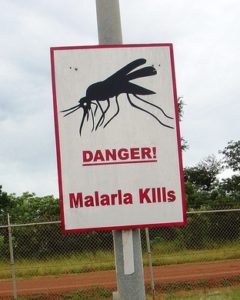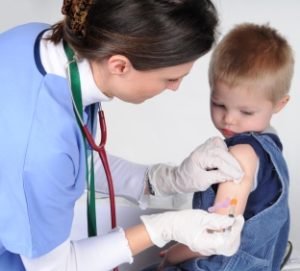
Symptomatic congenital cytomegalovirus disease following non-primary maternal infection: a retrospective cohort study
Cytomegalovirus (CMV) is an infection passed from an infected mother to the foetus at birth. Though the infection is common and often asymptomatic, data is scarce. Hadar et al’s study compared newborns from mothers previously infected with CMV (non-primary) and mothers infected shortly before or during pregnancy (primary). The study examined the current diagnosis of non-primary infected newborns and aimed to identify risk factors during pregnancy for congenital symptomatic CMV among newborns.

Disease severity was found to be higher in primary maternal CMV infection. However, symptomatic CMV disease is more common in non-primary infected newborns than primary infected newborns if the mother experiences gestational hypertensive disorders or diabetes mellitus, or takes medication throughout the pregnancy.
The current detection of CMV infection via CMV-IgM is rudimentary and inefficient. This study highlights the need for better diagnostic tools, if non-primary CMV infection substantially increases the chances of symptomatic CMV infection when the mothers experience additional health complications.
Further studies should focus on the prevention of non-primary CMV, as well as improved diagnostic methods, newborn screenings and interventions. This is to prevent poor prognosis among primary and non-primary CMV infected newborns.
Estimation of the burden of Varicella in Europe before the introduction of universal childhood immunization
 Varicella Zoster Virus, the herpes virus responsible for varicella (more commonly known as chickenpox), is regarded as a mild virus. However, its country-specific burden is often difficult to accurately measure.
Varicella Zoster Virus, the herpes virus responsible for varicella (more commonly known as chickenpox), is regarded as a mild virus. However, its country-specific burden is often difficult to accurately measure.
Riera-Montes et al aimed to quantify the burden of varicella across Europe in support of introducing a varicella-vaccination program. A systematic review searched for epidemiological data on the presence of varicella antibodies, primary care, hospitalizations and mortality.
Although several varicella-targeting vaccines are licensed in the European Union, few member states have implemented their use. In the absence of a universal varicella immunization scheme, the virus could infect 5.5 million people across Europe each year, 3-4 million people would seek a consultation with a physician, more than 20,000 patients could be hospitalized and approximately 80 people could die as a result of infection.
Although the most commonly infected would be children aged 5 or under, infected adults would be at a higher risk of hospitalization and death. Although varicella is not considered a serious threat, there is a clear need for improved surveillance strategies and health care at a community level to effectively control the disease.
Assessing real-time Zika risk in the United States

Outbreaks of Zika virus (ZIKV) in southern US states have highlighted the need for early indicators of ZIKV transmission. Castro et al devised a risk-assessment framework comprising: 1) epidemiological estimates of ZIKV importation and transmission rates, 2) ZIKV outbreak simulations, and 3) ZIKV risk analysis to measure the epidemic risk to inform strategic timing and spatial allocation of public health resources.
The framework analysed estimates of ZIKV emergence which proved to be consistent with historic dengue and chikungunya outbreaks. It also detected that metropolitan areas were at a higher risk of importation and southern counties were at a greater risk of higher transmission rates.
A main concern of public health professionals is the uncertainty they face during ZIKV outbreaks. This framework revealed the significance of reporting and the precision of detection. If most cases are reported quickly, policymakers can allow for cases to accumulate to initiate appropriate interventions and have more confidence in their assessments.
In ZIKV prone areas, quick action should be taken upon observing initial cases. In lower risk areas, a delayed response may be a better option in order to minimize unnecessary fear or waste resources.
An integrated study of human and animal infectious disease in the Lake Victoria crescent small-holder crop-livestock production system, Kenya
 Neglected zoonotic diseases (NZDs) are a major cause of illness in poor communities in tropical and sub-tropical Africa. They are often co-endemic with other infectious diseases – imposing a combined and unquantified burden.
Neglected zoonotic diseases (NZDs) are a major cause of illness in poor communities in tropical and sub-tropical Africa. They are often co-endemic with other infectious diseases – imposing a combined and unquantified burden.
Fèvre et al’s integrative ‘People, Animals and their Zoonoses’ (PAZ) study used novel human and animal co-sampling techniques and tested for several NZDs and non-zoonotic pathogens to holistically view a community compared to the ‘one-host, one-pathogen, one-outcome’ paradigm which often only focuses on groups most at risk.
Within the community, most people were either infected or exposed to NZDs, where high levels of parasitism were observed. Transmission of and susceptibility to NZDs may be exacerbated by infectious diseases common in developing countries such as malaria and HIV.
The study revealed that only a small percentage of the community were aware that infectious diseases can be acquired zoonotically, highlighting the need for more educational programmes in developing countries.
The PAV study may be useful in understanding how zoonotic pathogens contribute to the ecology of endemic infectious diseases in developing countries. The authors expect that the rich dataset from this study will allow them to further explore relationships between specific pathogens.
Elevated prevalence of multidrug-resistant gram-negative organisms in HIV positive men
Multidrug–resistant gram–negative organisms (MDRGNs) are a global threat and are a common healthcare-associated infection. As transmission routes of MDRGN are poorly understood, Reinheimer et al investigated the possible transmission of MDRGN through sexual intercourse.

The prevalence of MDRGN was tested in HIV-positive males, where 35 species were detected, with the most common being drug-resistant E. coli. Importantly, the number of MDRGN found in HIV-positive males was significantly higher than in HIV-negative males.
This identifies a potential method of preventing transmission of MDRGN and suggests that HIV-positive men are more susceptible to MDRGN infection. As only limited options are available for the treatment of MDRGN infection, prevention of infection through sexual transmission may be worthwhile.
It is important to note that pre-existing conditions such as gastrointestinal (GI) diseases and other co-infections may compromise the GI mucosa, potentially influencing the transmission of MDRGN regardless of the transmission route.
The results from this study suggest that safer sex would not only protect people from STI-associated pathogens but also MDRGN. It would also be worthwhile investigating whether this applies to women.
Prevention of tick bites: an evaluation of a smartphone app

Lyme borreliosis (LB) is a serious threat with no appropriate vaccine available. Preventative measures are required to avoid tick bites as controlling tick populations is an unrealistic goal. Because smart phone applications (apps) are now commonplace in the Netherlands, Antonise-Kamp et al. designed an app named ‘Tekenbeet’ (Dutch for ‘tick bite’) to engage people and educate them on ticks and tick bites.
The app was available for 20 months and during that time, it was downloaded almost 40,000 times. The authors evaluated the app’s effect by requesting users to complete a survey aimed at evaluating usage and satisfaction with Tekenbeet, as well as any influence it may have had on the understanding of tick bites. Collated survey results revealed that the app increased peoples’ knowledge about tick bites and increased their intention to comply with preventative measures.
The use of the app represents an alternative method in educating the public about infectious diseases. It proved capable of motivating a range of people to perform their own preventative measures and hopefully reduce the incidences of tick bites. The findings also highlight the versatility and effectiveness of apps in the prevention of infectious diseases.
The global effect of maternal education on complete childhood vaccination: a systematic review and meta-analysis
There are well established correlations between maternal education and reduction in childhood mortalities. One proposed link is that a more educated mother is more likely to have more access to health care and vaccine uptake.
Forshaw et al performed a systematic review and meta-analysis to establish a correlation between increasing maternal education and vaccine uptake. The analysis showed that the odds of full childhood vaccination were 2.3 times greater in children whose mother received secondary or higher education compared to children whose mother had no education.
However, vaccine uptake and childhood mortality is not solely linked to the level of education a mother receives; educated women may be more likely to encourage healthier lifestyle choices which may also prevent childhood mortality irrespective of vaccine uptake.
The study highlights the existing issue that women’s education and gender equality is still in need of major improvement in developing countries. And, whilst this study cannot provide the overall effect of maternal education on vaccination uptake, it demonstrates the positive effect maternal education has on the next generation – this should be taken into consideration when devising health policies aiming to improve vaccine uptake.
Infectious diseases are known to represent a major problem across the world. There is no country which can afford to ignore these challenges due to the potentially devastating and far reaching effects these can pose to the human race. Pathogens are also constantly changing their genetic make-up, this often challenges the development of novel vaccines to its limits. There is also the factor of mass migration, travel and trade which can be notoriously effective in the spread of infectious diseases.